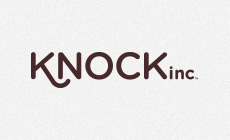Sheila Ronning, CEO & Founder of Women in the Boardroom, does not mince words when it comes to the topic that gave her organization its name.
“Research for the amount of women serving on corporate boards is only being done for the Fortune 500 and those boards are still mainly only looking at CEO’s in F500 to fill those spots. So yes, we know there are a lack of women sitting at the helm of those companies,” Ronning said. “Mid cap and small company boards are also a great place for women to take a seat at the table and there are thousands and thousands of women who are more than qualified for these boards. In just the last 12 months, even though we are not a search firm, we at Women in the Boardroom have received 19 notifications of these board seat openings and we work to connect our board ready women with these companies.”
As Ronning affirmed, there are more than enough qualified women, but recent Catalyst research tells us that there has been absolutely no change in the number of women on Fortune 500 boards or the number executive officers and top earners. We’ve talked at length about the lack of female representation at these levels, but what now? How do we ensure we’re not having the same conversation about women in the boardroom in 2014?
Malli Gero is Executive Director and Co-Founder of 2020 Women on Boards, a national campaign working to increase the women on U.S. boards to 20 percent by the year 2020. We need to change the narrative and instead of focusing on the bleak numbers, focus on what can be done. Gero says there are three parties who can be making progress both separately and collectively: stakeholders, CEOs, and individual women. All three, Gero says, are important in the quest for gender parity.
WHAT STAKEHOLDERS CAN DO
Gero attributes the slow rate of change to a seemingly-common misconception held by CEOs and board chairs: stakeholders don’t pay attention to board composition. Gero says it’s also a matter of transparency, an issue 2020 Women on Boards is working to address.
“We believe that when stakeholders voice concern over corporate behavior, companies pay attention. We saw this happen when Facebook went public in 2012. After the public outcry about no women on their board, they put two women on, Sheryl Sandberg and Susan Desmond-Hellman. We saw it again this year, after the Twitter IPO. A month after the launch, and great public debate, Twitter appointed Marjorie Scardino,” she explained.
If you’re a shareholder, 2020 recommends you “vote your proxy”. On the 2020 Women on Boards site, the importance is explained: “If you own shares of a company you have a say in how the company is run. Shareholders vote on a variety of issues, like the election of board members, executive pay, and environmental issues. The votes are counted at the company’s annual meeting. If you can’t attend the meeting, you’re asked to vote by proxy. This is typically done by mail, although online proxy services are becoming very popular.”
So the next time a shareholder is able to vote by proxy, they should review the board. Are there any women? Fewer than 20 percent? If so, write on your proxy: “Where are the women?” If enough people ask, the company will learn how important gender diversity is to shareholders.
WHAT COMPANIES CAN DO
When asked why few or no women are on the board, CEOs often lament the inability to find qualified women. The real problem, however, is that they don’t know how to find them.
“Companies need to be proactive about their board searches. If they want to diversify their boards, they must specifically request that women candidates be recruited. There will be a broader field of candidates if companies are willing to think beyond the traditional ‘C’ title candidate,” Gero said.
To find qualified women, 2020 Women on Boards recommends CEOs and nominating chairs work with local women’s business organizations that offer board search services; search membership rosters of pertinent trade associations; contact representatives from women’s leadership programs at local universities; and reach out to business women who are quoted in the business media.
Gero is quick to point out, however, that attracting top female talent takes more than careful recruiting.
“Companies also need to make sure that diversity is practiced at all levels – from the top down,” Gero said. “When women are part of a senior management team it sends a signal to all employees that women employees are valued and have real opportunity for advancement.”
And creating an environment where women can reach the boardroom requires women’s leadership programs and family-friendly policies.
“We find that companies that excel in this area, and incorporate family-friendly policies into their corporate culture, usually have women on their boards,” the executive director said.
The research backs this up. In February 2013, Calvert Investments issued the report Examining Cracks in the Ceiling: A Survey of Corporate Diversity Practices of the S&P 100, which evaluated how large cap companies hire, promote, and invest in a diverse workforce. Of the four diversity leaders, three are “W” Companies (“winning” companies with 20 percent or more women directors): CitiGroup, Coca Cola, and JP Morgan Chase. One was a “V” company (“very close” with 11-19 percent): Merck & Co.
WHAT WOMEN CAN DO
While the responsibility to increase the number of women on boards should be held by stakeholders and CEOs, women need to be part of the solution as well. Securing a board seat is similar to finding a job; it requires strategic planning.
“Women need to make it known that they’re interested in being on a board. They need to make sure they are board ready, by taking one or more of the excellent get-on-board programs that exist through WCD, NACD, or many universities. They need to find sponsors who can advise them and make important introductions,” Gero said.
Gero says progress truly starts with the first step.
“We think a best practice for 2014 would be for companies that have no women directors, or just one, to take the 2020 Pledge,” she said. “Put a woman on the board now and commit to getting to 20 percent or greater by 2020.”
View the original article from The Glass Hammer here.
Thanks to The Glass Hammer for giving us permission to share this article. The opinions and experiences expressed by the author or subjects do not necessarily reflect those of Women in the Boardroom.






